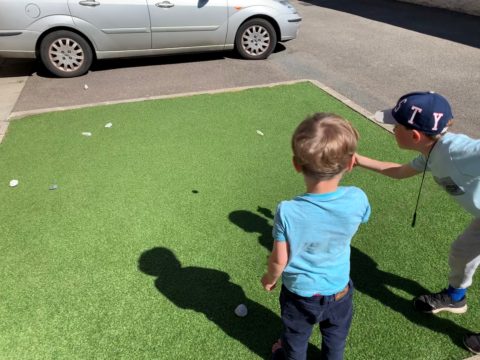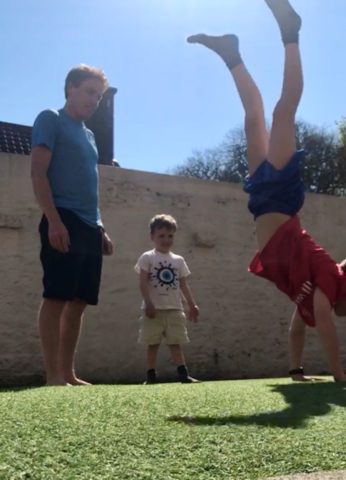Q: When is it safe to start exercising after childbirth?
A: Sufficient time is essential for healing and regaining strength after pregnancy and childbirth, especially in the abdominal and pelvic floor muscles. Guidelines suggest, that for most women with a healthy pregnancy and uncomplicated vaginal delivery, gentle exercise can begin a few days postpartum, as soon as you feel ready. For those who have had a caesarean section or experienced complications, it’s best to consult a GP and Pelvic Health Physiotherapist to find out how you can start exercising safely.
Q: What are the benefits of exercising after childbirth?
A: Postpartum exercise can provide numerous physical and emotional benefits:
- Strengthens muscles and improves fitness
- Reduces the risk of postpartum depression
- Boosts energy levels
- Promotes better sleep quality
- Relieves stress
- Helps with weight management after pregnancy
Q: How much exercise should I aim for each day?
A: Aim to stay active for about 20–30 minutes daily. Initially, focus on gentle movements that engage your major muscle groups, walking, pelvic floor exercises, and gentle yoga. Even 10 minutes of activity can benefit your body and start you on a healthy path, according to guidelines.
Q: What are the official exercise guidelines for postpartum women?
A: Experts recommend gradually working toward 150 minutes of moderate-intensity weekly exercise. This goal can be achieved with activities that fit naturally into your day, such as:
- Walking and playing with your baby
- Dancing or gentle aerobics
- Climbing stairs
- Leisure activities at home
Q: How do I find time for exercise with a newborn?
A: Time is definitely a challenge for new mums! You can break activity into smaller, manageable sessions throughout the day. For example, try a 10-minute walk with the stroller, some stretching during nap time, or simple bodyweight exercises like squats and lunges while the baby is in a safe place nearby. Remember, these small sessions add up and are highly beneficial.
Q: Can breastfeeding affect my ability to exercise?
A: There’s no evidence that moderate exercise affects milk supply. However, it’s a good idea to nurse or pump before working out for comfort, as a full chest may feel uncomfortable. Also, stay hydrated, and wear a supportive sports bra to avoid strain.
Q: How can I strengthen my core safely after childbirth?
A: Core strength is essential postnatally. Start with gentle exercises like pelvic tilts, heel slides, and pelvic floor activation to build strength without strain. As you progress, you can add more challenging exercises, like crunches and planks. But always listen to your body and avoid pain or discomfort.
Q: What challenges do postpartum women often face with exercise?
A: Many new moms find it difficult to meet exercise recommendations due to:
- Physical discomfort from recovery
- Fatigue and limited time due to caregiving
- Parenting responsibilities
- Environmental factors like neighbourhood safety or weather
These factors are normal and valid. Social support from family, friends, or postpartum groups can help. Even short activities spread throughout the day can be a great way to overcome these barriers. Research highlights the importance of social support in facilitating postpartum exercise, particularly for first-time mothers.
Q: What if I’m experiencing pelvic pain or incontinence?
A: Experiencing vaginal heaviness, pain with intercourse or incontinence postpartum is common, but it’s important to address these issues. Avoid high-impact exercises like jumping or running until you’ve regained pelvic floor control. Supervised pelvic floor muscles exercises are key for recovery, and seeing a pelvic health physiotherapist can help you develop a tailored plan to get rid of these symptoms.
Q: When is it safe to start running again postpartum?
A: Generally, 3–6 months postpartum is a safe timeframe to consider a return to running. Before starting, it’s essential to complete the following exercises comfortably, without pain, heaviness, or incontinence:
- Walk for 30 minutes
- Hold a single-leg balance for 10 seconds
- 10 single-leg squats on each side
- Jog in place for 1 minute
- Forward bound, 10 repetitions
- Hop in place 10 repetitions on each leg
- Single-leg “running man”
If any symptoms such as urinary incontinence, vaginal heaviness, or unusual bleeding occur during these exercises, reach out to a pelvic health physiotherapist for help and advice.
Q: Are there specific strength exercises that will help prepare for running
A: Yes! Preparing the key muscle groups will reduce the risk of injury. These are the exercises for you:
Single-leg calf raise
Single Leg Bridge
Standing split squat
Side-lying leg lift
These exercises strengthen the lower body, improve balance, building a strong foundation for safe running.
Q: What is a holistic approach to postnatal fitness and why is it important?
A: Postpartum recovery is about more than just physical strength. Factors like weight, fitness level, sleep, breastfeeding, and even psychological health play a role in a safe return to exercise. Partnering with a physiotherapist to create a personalised recovery plan can help you address these areas and set realistic, meaningful goals.
Q: Any final advice for new moms returning to exercise?
A: Yes! Focus on what you can do rather than what you can’t. Gradual, consistent progress is more beneficial than pushing yourself too hard too soon. Remember, the journey back to fitness is unique for everyone, so take it at your own pace and celebrate each step forward.
Blog post written by Alena Zakharova, Pelvic Health Physiotherapist
If you have any questions or concerns after pregnancy, please contact me. Our clinic offers a Postnatal MOT, which includes a comprehensive assessment and personalised advice to help you safely return to exercise after childbirth.































